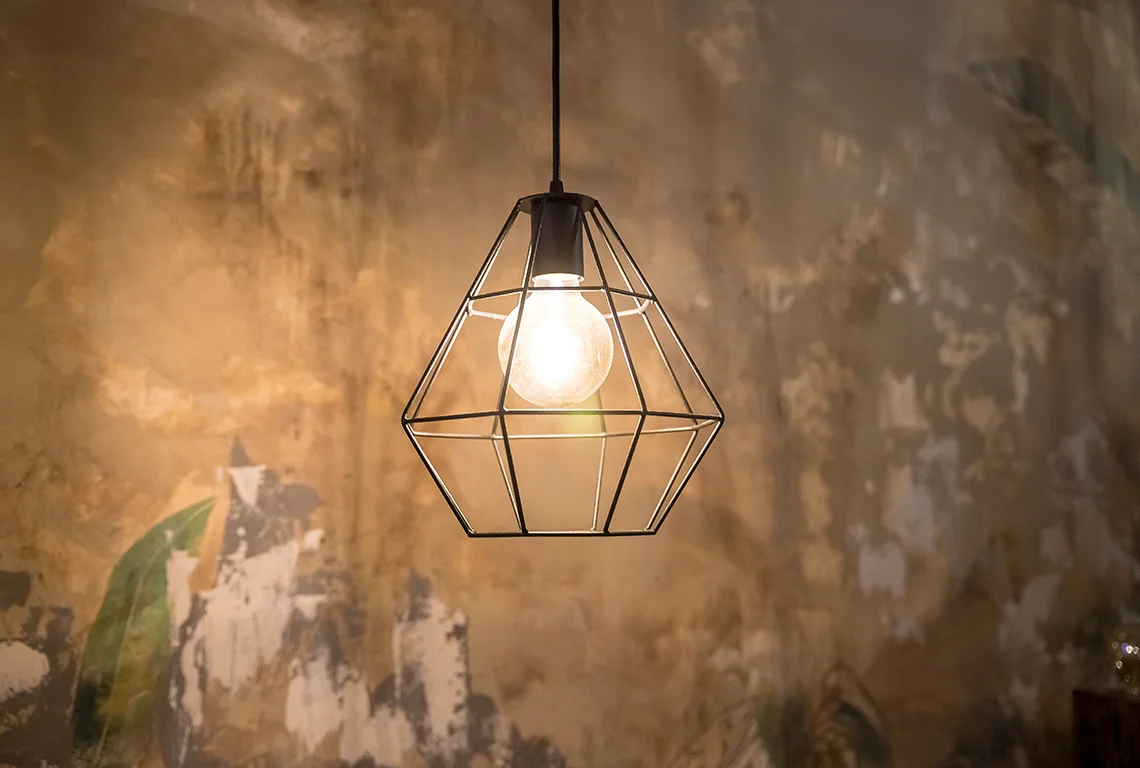The bedroom is not only a place to sleep, but also to relax and unwind after a hard day. Lighting plays an insanely important role here. Its type and intensity makes the difference between a cozy, atmospheric interior and a room where it’s hard to focus.
Not sure how to light your bedroom? We have some criteria for you that will make it easier to choose a bedroom lamp.
The role of lighting in the bedroom.
The quality of our sleep benefits from well-chosen lighting. That’s why lamps are so important especially in the bedroom.
Light has a huge impact on regulating the diurnal rhythm. It is a signal sent to our brain that tells it when it is time to be active and when it is time to rest. In addition, light affects the production of melatonin – the sleep hormone.
Therefore, it is best to choose bedroom lamps that provide dimmed light. Warm colors and lower wattage bulbs help you relax and smoothly prepare your body for sleep.
Lamps are also a great tool for decorating a space and creating a unique atmosphere. They can make a bedroom cozier by appropriately diffused light, or elegant with a chic design. Lamps will complement the decor and give it the shabby chic you want.
If you have special items in your bedroom that you love and find beautiful, you can make them stand out by focusing light on them thanks to lamps.
Criteria for choosing bedroom lamps.
We have identified 5 main criteria that will allow you to quickly choose a bedroom lamp that you will enjoy every day.
The right kind of lamp.
This is the first decision that will come to you. Remember to think about both the main lighting system (pendant and bedroom floor lamps) and complementary lighting (bedside lamps, desk lamps, wall lamps).
There are many different types of lamps. The best for bedrooms are:
- pendant lamps;
- bedside lamps;
- floor lamps;
- wall lamps;
- desk lamps.
Do you need all of them? That depends on what purpose (besides sleep) your bedroom serves, what size it is and how much free space it provides you with.
Ideally, the bedroom is exclusively a place for relaxation and sleep, but let’s not kid ourselves, many of us also work here. From here we will also tell you a little about desk lamps.
Pendant lamps.
Pendant lamps hang from the ceiling and can be used as task lighting or ambient lighting.
This is a good option for small bedrooms with limited space. They can be hung at different heights (optimally about 40 cm above countertops).
If the pendant lamps you like are too bright for your bedroom, you can choose dimmable models or invest in dimmer switches.
Bedside lamps.
Bedroom lamps – a bedside lamp.
Bedside lamps have a shade that diffuses light. It is very important to choose the right height for this type of lamp.
It should be proportional to the size of the nightstand and bed. A good rule of thumb is that the widest part of your lamp (usually the shade) should be about 1/3 the width of the cabinet on which it stands.
Bedroom floor lamps.
Floor lamps
Bedroom floor lamps will be your primary source of light if you don’t have any overhead lighting.
Ideally, bedroom floor lamps are twice as tall as your headrest and can accommodate high-powered bulbs. They are typically used for specific tasks (such as reading) or ambient lighting.
They are most often placed opposite a bed, next to a reading chair or near a desk.
Wall lamps.
Small bedrooms often have limited space, so wall lamps and pendant lights are a great way to save space. They also add modern style, reduce clutter on the bedside table and are ideal for reading.
Desk lamps.
Before you buy a desk lamp for your bedroom, think about whether you actually need one. Having a large desk, a lamp will be an ideal practical and design addition. However, if your desk is small, a floor lamp adjacent to it may be better.
Size to fit the space.
A lamp that is too small is one of the most common decorating mistakes people make.
The simplest rule of thumb is that the larger your bedroom, the bigger and bulkier the lamp you can choose.
If your bedroom is small, tall, slender lamps with streamlined bases will definitely look better in it.
Consider the height, width and number of lamps you need to properly illuminate your bedroom. To create a consistent look, try to use lamps of similar height.
Match the number of bedroom lamps to the size of the room. For example, if you have a large bedroom you can boldly equip it with two bedside lamps in addition to the main lighting. If you have a smaller room, one bedside lamp and, for example, a floor lamp should suffice.
Lampshade selection.
Lampshades – table lamps
Lampshades are a simple way to add the right character to the light. Material, off-white lampshades make a warm, soft light reign in the bedroom. They let the most light through. For that, opaque lampshades help focus the light on specific objects.
Also, the shape of the lampshade will allow you to adjust the lamp to suit your needs. For lovers of reading before bed, we recommend lampshades in the shape of a cone or a bell. If you want to illuminate the environment around the lamp evenly, choose lampshades with a regular diameter.
When choosing the height of the lampshade, pay attention to the size of the lamp body. Ideally, the lampshade should be about 2/3 the height of the distance separating the bottom of the lamp and the base of the bulb. The width of the lampshade should be 2 times the base of the lamp.
Interior styling.
Lamps can help make a bedroom’s decor more cohesive. They also add decorative charm to it.
Choosing bedroom lamps that contrast with other elements in the room will give your space a unique character and enhance the distinctiveness.
Make sure, however, that the bedroom’s design elements have some common features. In the case of lamps, this means similar colors, textures or materials for the shades or bases.
Otherwise, you risk the space becoming just a collection of items that have little in common. It’s hard to relax in such a place.
Habits.
Be sure to keep the lighting in line with your habits. What’s the use of designer lamps if you’re annoyed every evening that you can’t read comfortably next to them, but constantly see spots from the harsh light?
Consider what you like to do in your bedroom. Maybe you love to read before bed, work early in the morning at your desk, or the first thing you do when you wake up is put together your closet.
A daily routine will help you choose the right bedroom lamps and place them in good locations.
In summary, the right bedroom lamp is one that gives you as much light as you need, is proportionate to the size of the room, makes it easy to relax before bed, and still looks good.
If you keep the above tips in mind, designing your bedroom will be much easier. Lamps are one of the most important items and can add a lot of charm to any room in your house, not just the bedroom.


